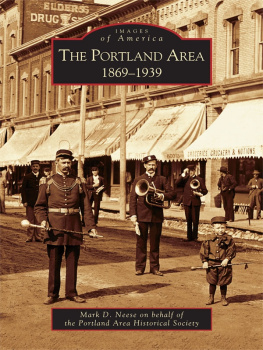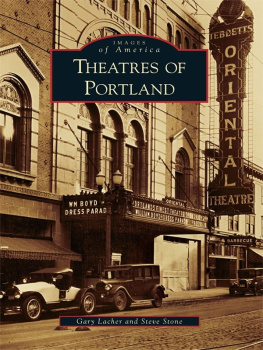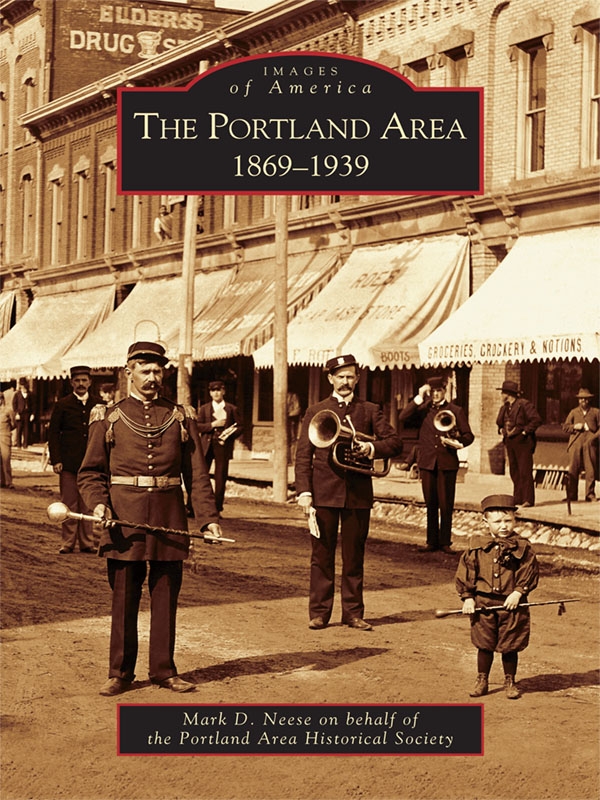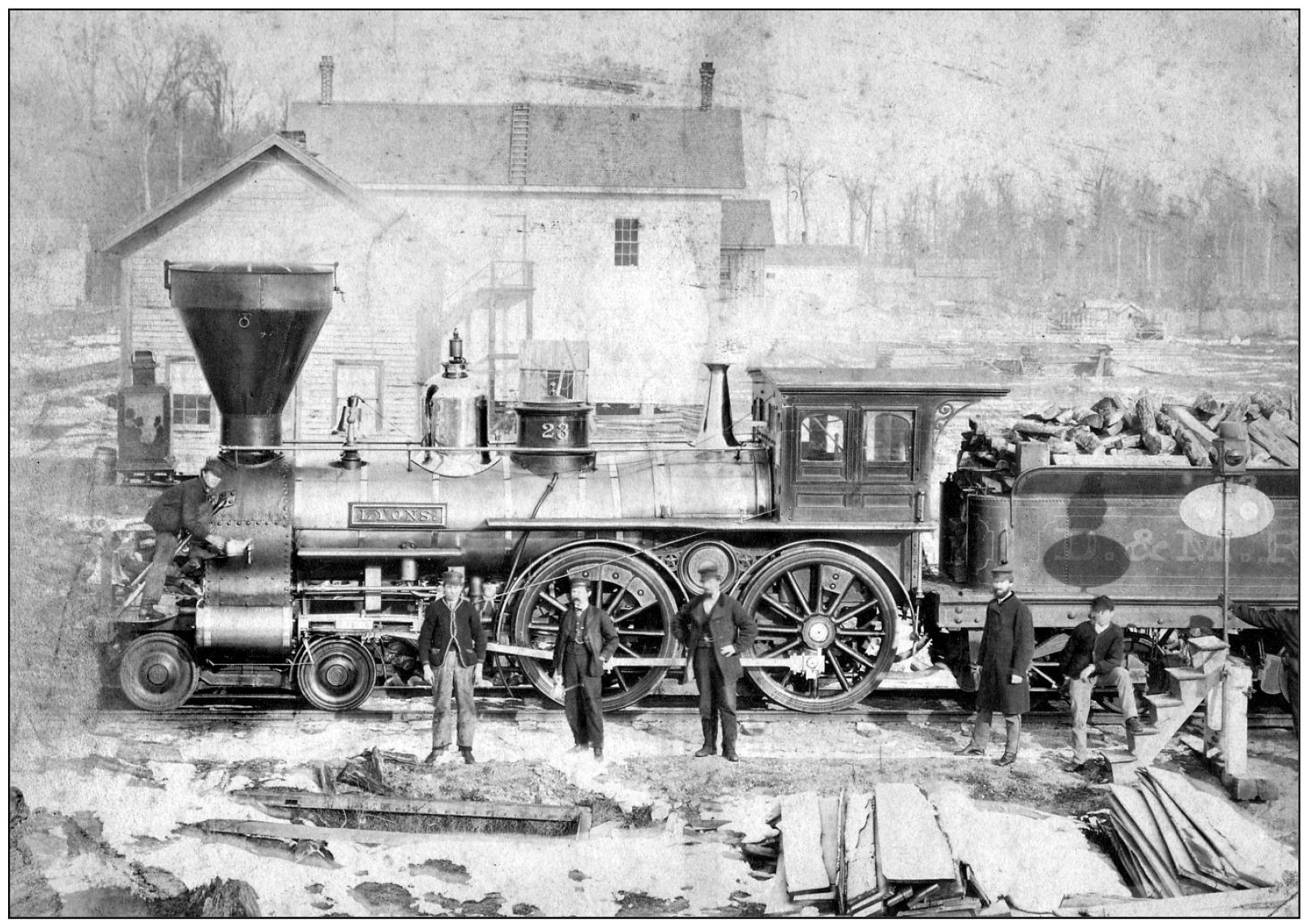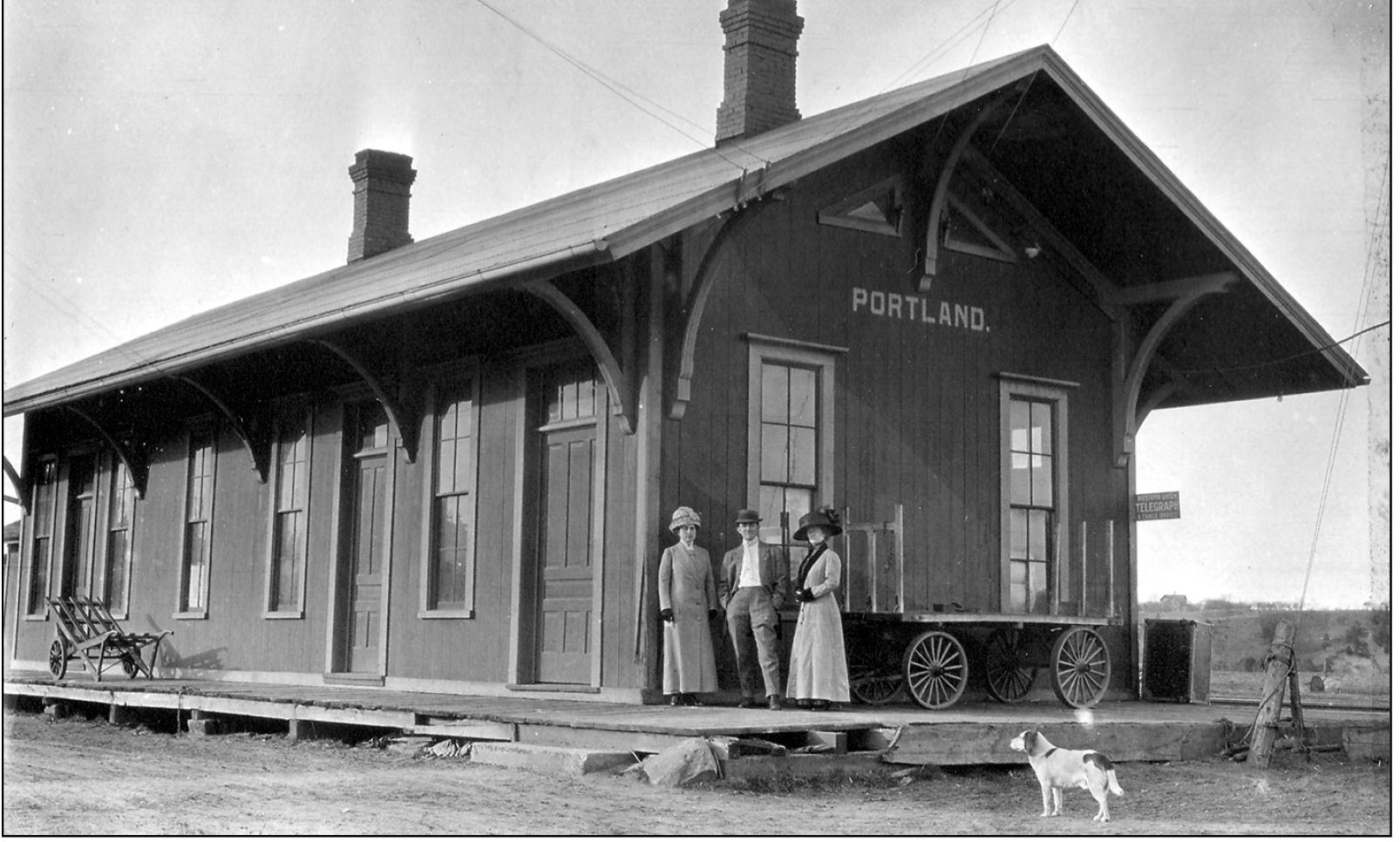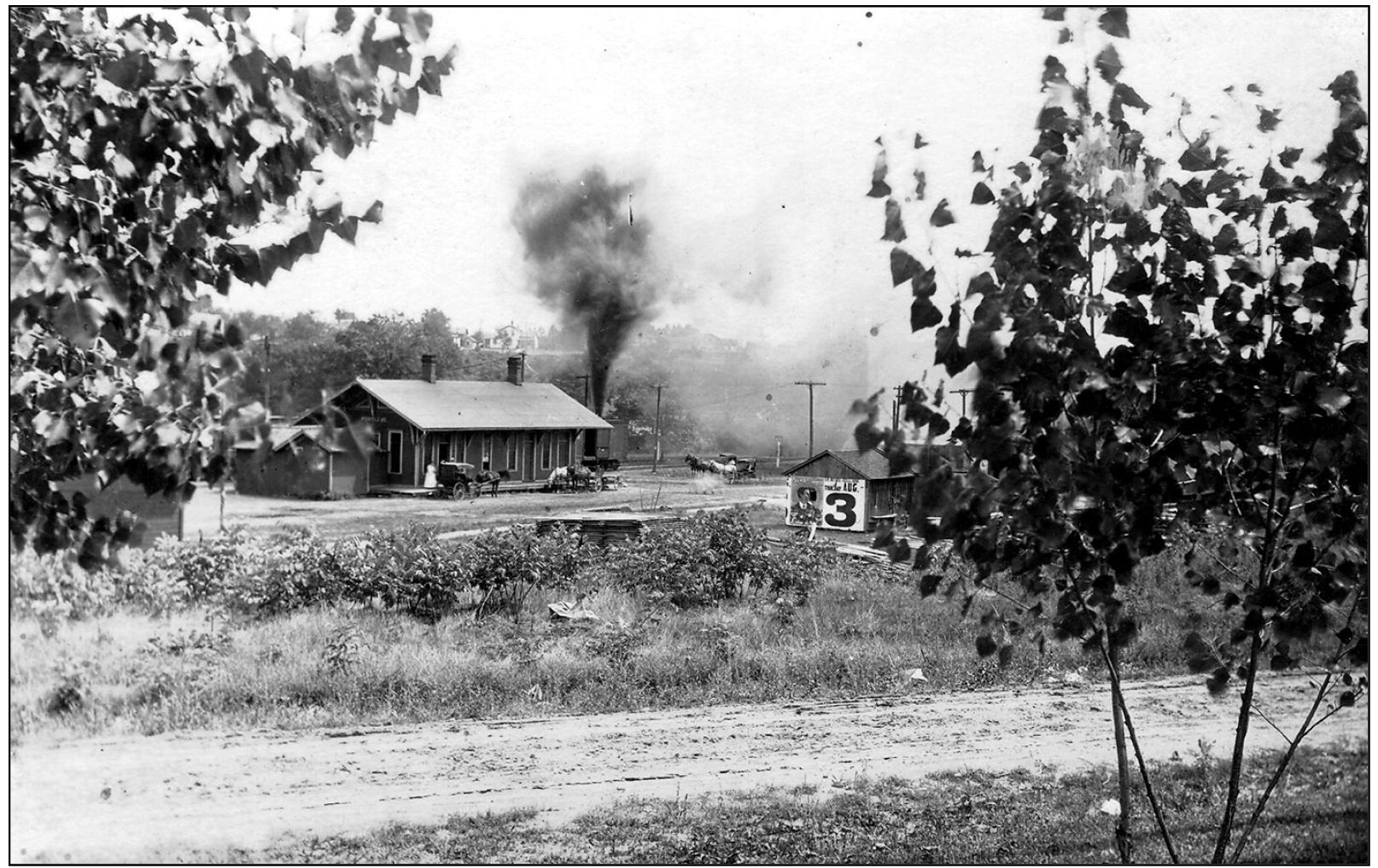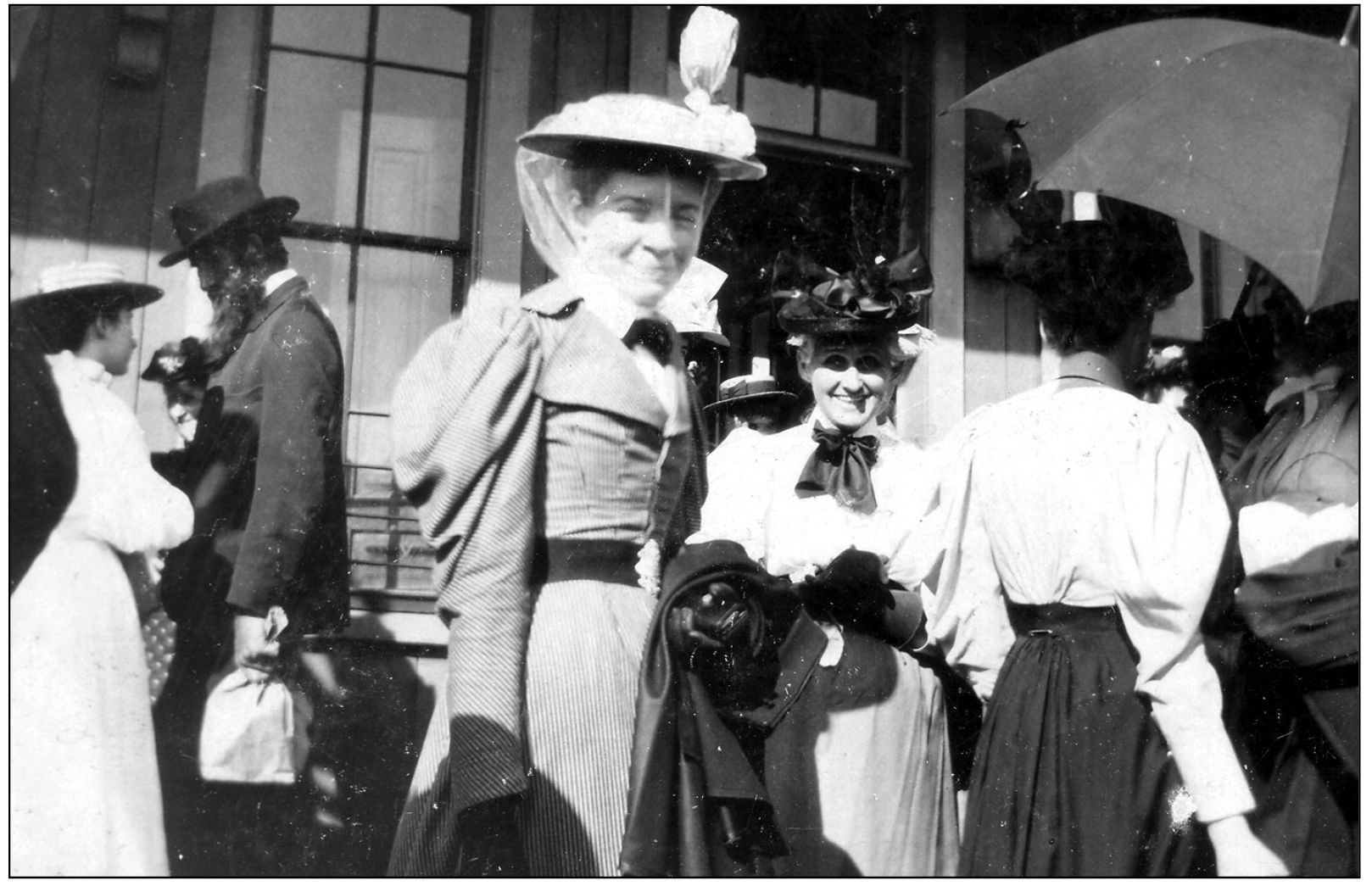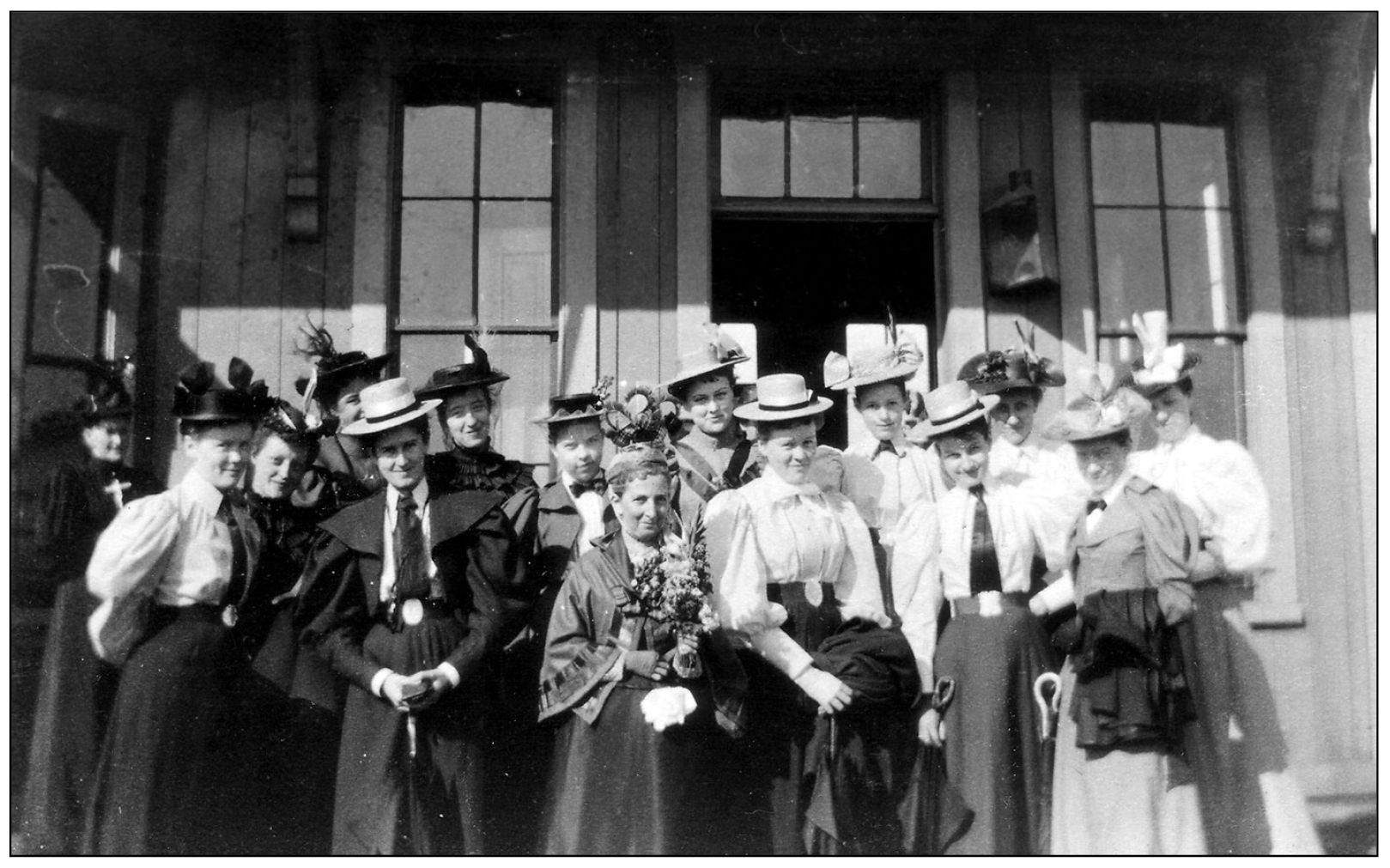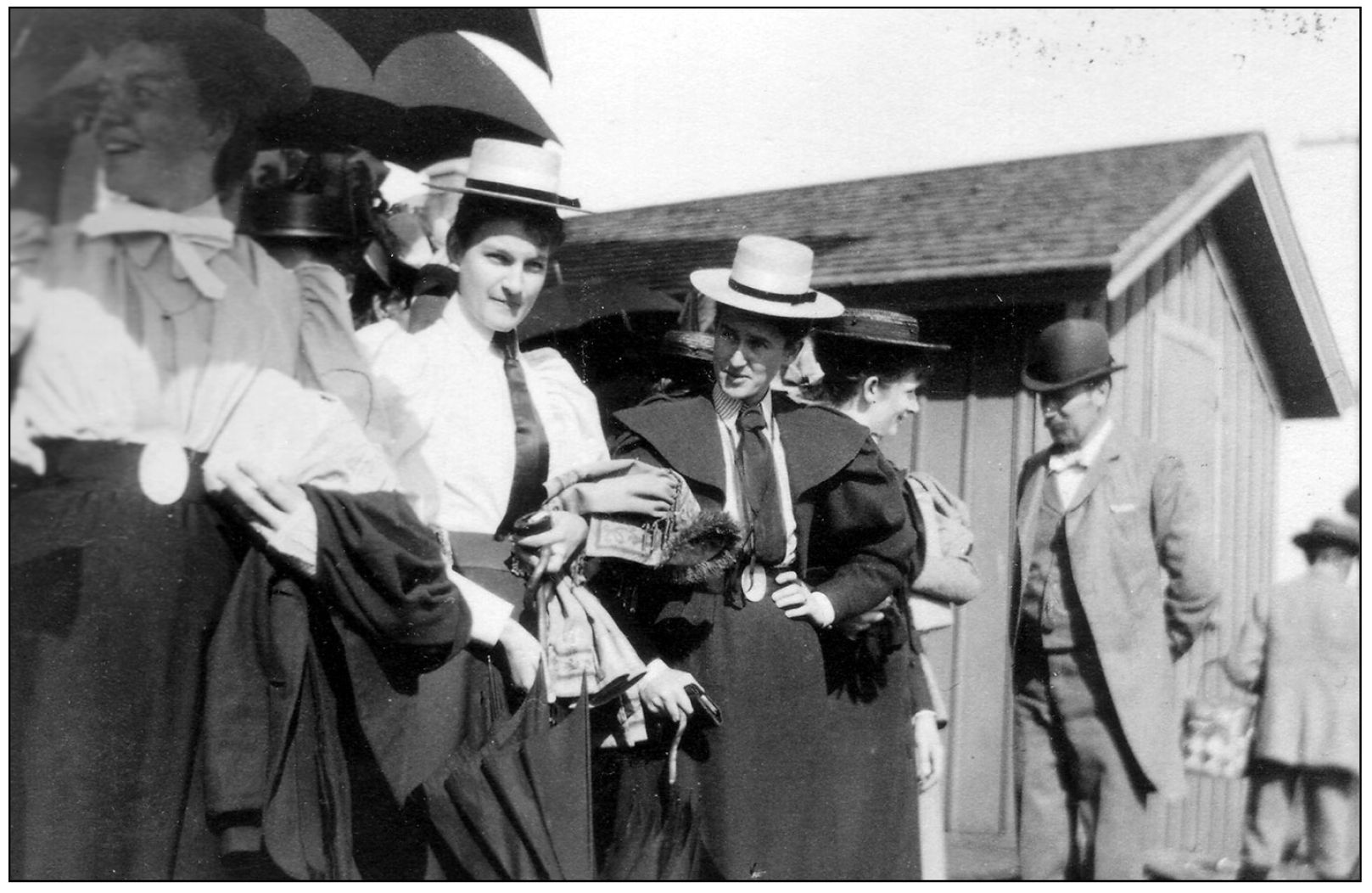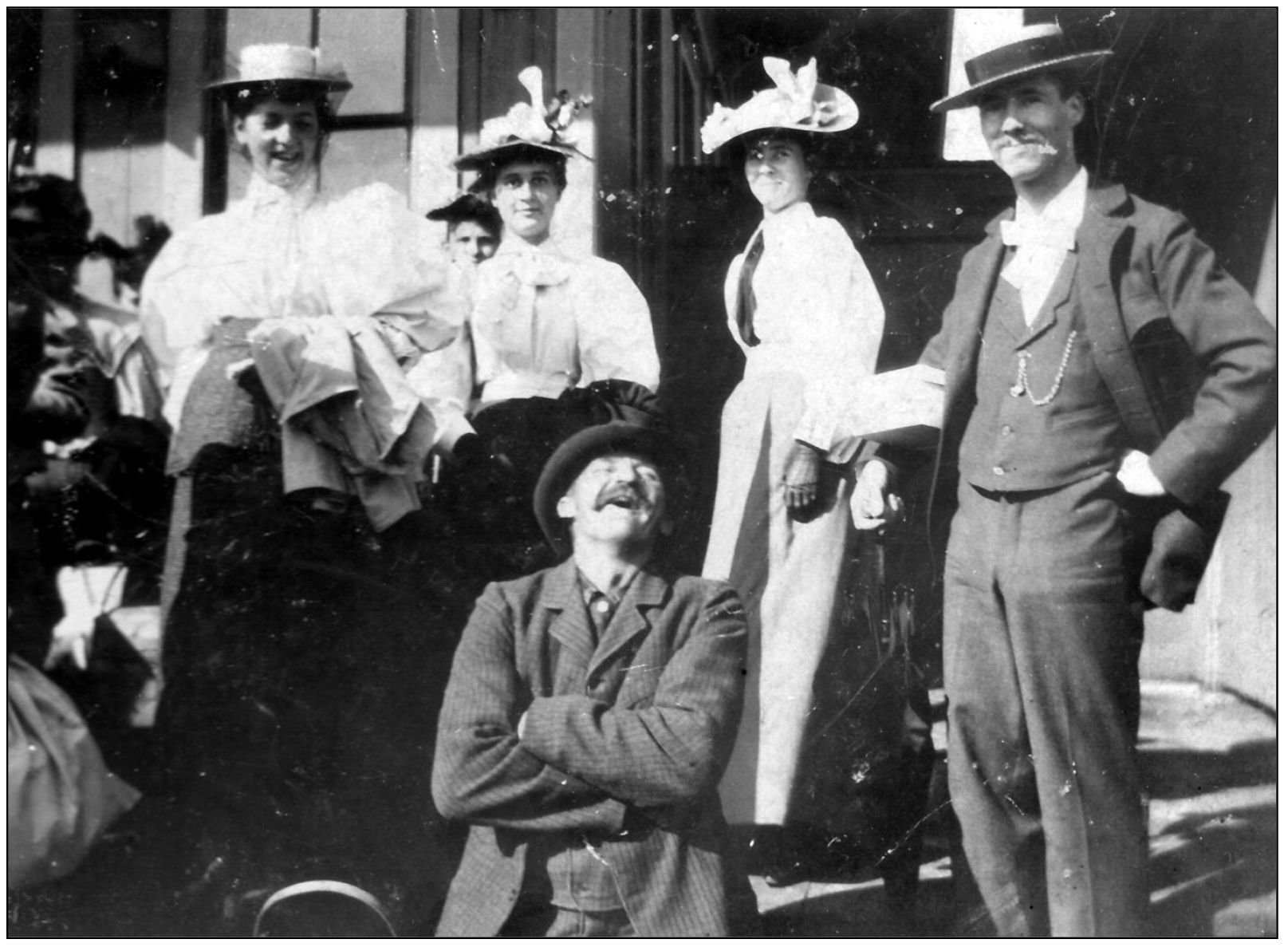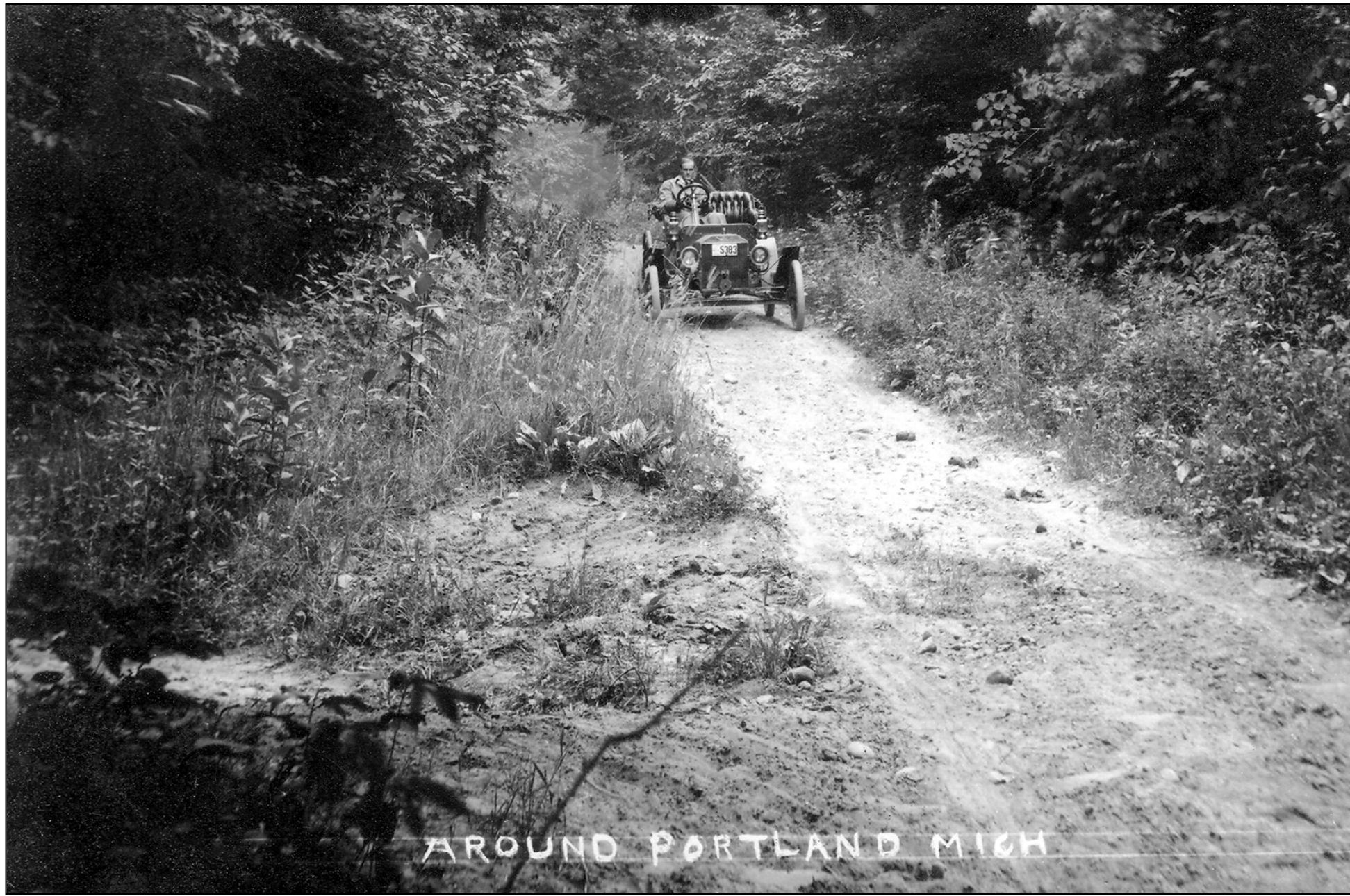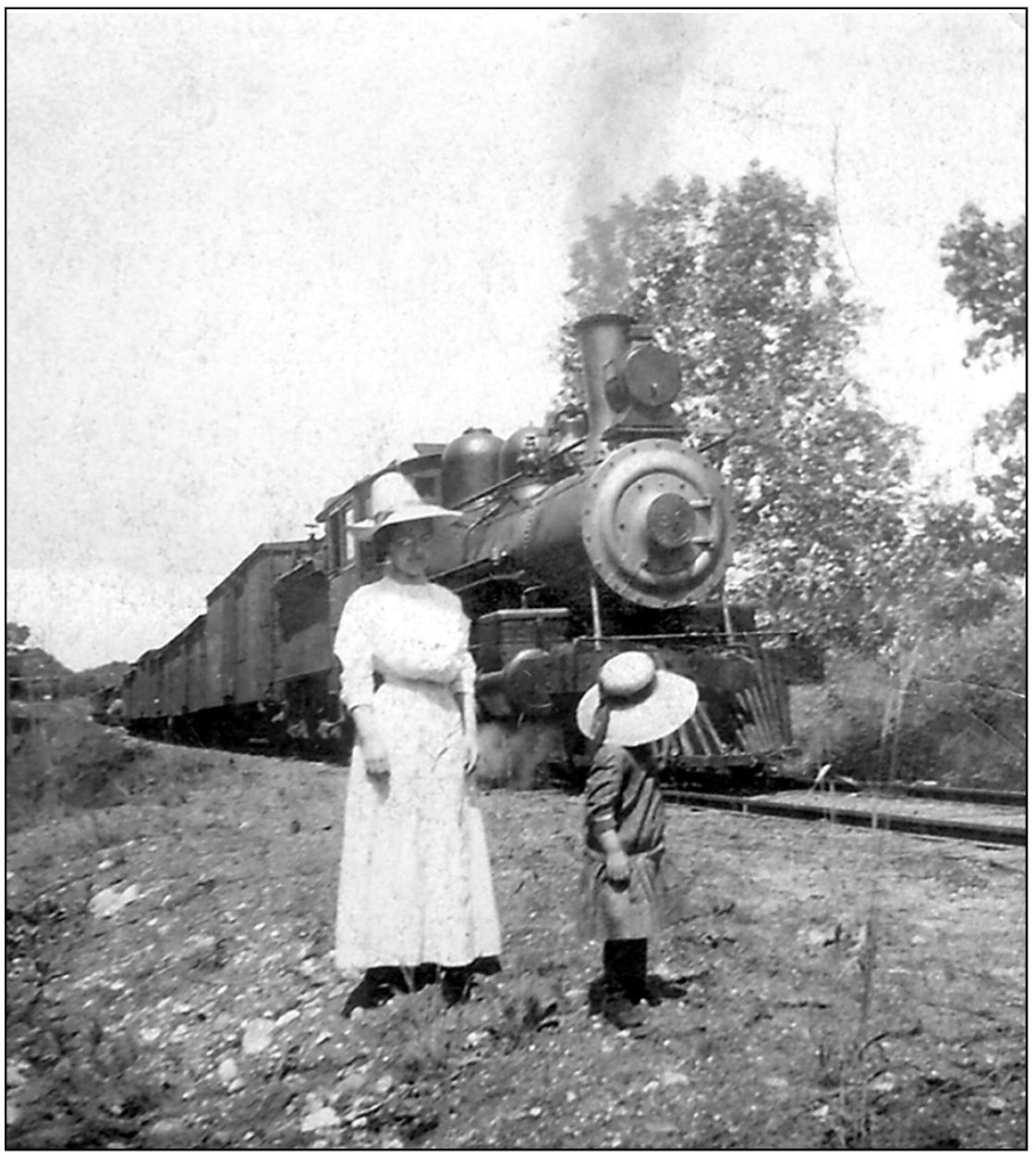ACKNOWLEDGMENTS
I wish to thank, first and foremost, the Portland Area Historical Society for supporting this project. I am particularly grateful that they entrusted me with their outstanding photographic collection, thus enabling me to scan them on my home computer. Many thanks also to the societys editorial committee, particularly William Davis, Anne Rademacher, Carol Tonkin, and Robert Torp-Smith, who took the time to look over the manuscript and offer their valuable suggestions. Thanks also go to Seymour Van Derske for his colorful and informative stories about his ancestors, the Dilleys and Goodwins.
I extend my thanks to Anne Rademacher, Rick Teachout, Robert Torp-Smith, and Carol Tonkin for loaning me their photographs and postcards. These excellent images greatly contributed to this book. I also wish to thank Rick Teachout for sharing information regarding his beautiful home, the former Edward Goodwin house.
I wish to thank Bradley Seal and Patricia Need, who, when a complete stranger knocked on their door one Sunday afternoon, graciously and enthusiastically gave him the grand tour of their home, the former George Allen house. Their kindness and insight was much appreciated. Thanks also to Kay Devlin for providing information regarding her home, the former Charles Maynard house.
I would be remiss if I did not thank my parents for instilling in me, at a young age, a love and appreciation of history.
Finally, I wish to thank my wife Lynda, for not only assisting with the research for this book, but putting up with me during the four months that I was completely absorbed by this project. Your love and support has meant everything to me.
Find more books like this at
www.imagesofamerica.com
Search for your hometown history, your old
stomping grounds, and even your favorite sports team.
One
TRANSPORTATION
ONE OF THE FIRST TRAINS IN THE PORTLAND AREA. This wood-burning Detroit & Milwaukee Railroad steam locomotive probably arrived in the late autumn of 1869. The D&M Railroad ran through Muir, Ionia, and Saranac. (Courtesy of the Portland Area Historical Society.)
WAITING FOR THE AFTERNOON TRAIN. This sharply-dressed trio poses next to a baggage wagon as they wait for the morning train at the Portland depot, c . 1910. In the early 20th century, when this photograph was taken, there were five daily trains east to Danby, Eagle, Grand Ledge, and Lansing; and five daily trains west to Collins, Lyons, Ionia, and all points beyond. Note the sign on the right-hand side of the building that reads Telegraph. (Courtesy of the Portland Area Historical Society.)
PORTLAND DEPOT. This view faces east towards the Portland depot. The depot was located on the northwest edge of the village, near the present-day intersection of Water and Pleasant Streets. (Courtesy of Robert Torp-Smith.)
EXCURSION GROUP. Portland banker Lorenzo Webber took these photographs of an excursion group waiting for the train at the Portland depot, c . 1895. In the top photograph, the two women facing the camera are Mary White Buck and Mary E. Webber. Mrs. Buck was the wife of George Buck, a Portland-area farmer. Mrs. Webber was Lorenzo Webbers mother. In the second photograph, only the women near the front are identified. Beginning with the woman in black on the far left, they are: Italy Dey, Frances Reynolds, Meredith Smith, Christine Webber, Nettie Guilden, Lucy Whitlock, Minnie Jenkins, Gertrude Morehouse, Ethelyn Briggs, and Mary White Buck. (Courtesy of the Portland Area Historical Society.)
GATHERING IN FRONT OF DEPOT. In the Victorian era, women were advised to avoid wearing laces and velvet because dust particles attached to the fabric. It was also considered in poor taste to wear elaborate or expensive jewelry while traveling. (Courtesy of the Portland Area Historical Society.)
LAUGHING AND WAITING FOR THE TRAIN. This group, caught during a moment of jocularity, is waiting for the train to take them to Ottawa Beach on Lake Michigan. The photograph was taken on August 7, 1895. Pictured from left to right are Dora Webber, Nellie Guilford, Nora Lakin, and Eugene Smith. The man laughing in the front is identified on the back of the photograph as Brooks the drayman. A drayman hauled freight to and from the depot and railroad freight house. (Courtesy of the Portland Area Historical Society.)
A ROUGH ROAD NEAR PORTLAND. In the early days of automotive travel, rural roads were narrow, bumpy, and altogether treacherous. This one-lane, rock-strewn trail outside of Portland is representative of typical rural road conditions c . 1910. It was at this time that the Good Roads Movement took hold in Michigan. Led by such people as Horatio Earle, who became the states first highway department commissioner, the Good Roads Movement lobbied successfully for state and federal funding to both improve existing roads and build new ones. (Courtesy of the Portland Area Historical Society.)
WATCHING THE TRAIN WEST OF TOWN. This photograph was taken on June 5, 1911. Myrtle Blackman and young Ernestine Vogt watch a train pass by west of Portland. (Courtesy of Carol Tonkin.)
MOTORING THROUGH SUNFIELD, 1906. In the first decade of the 1900s, automobiles were largely thought of as a novelty and not yet as serious modes of transportation. They were playthings for the wealthy and out-of-reach for the common man. Pictured is an automotive excursion that took place on June 24, 1906. These drivers posed in Sunfield, a neighboring community of Portland. (Courtesy of the Portland Area Historical Society.)

